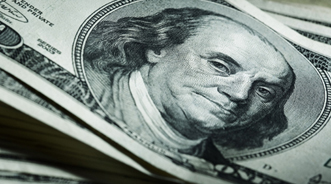NADA: Cash Incentives Much More Damaging to Used Values than Finance or Lease Offers

By subscribing, you agree to receive communications from Auto Remarketing and our partners in accordance with our Privacy Policy. We may share your information with select partners and sponsors who may contact you about their products and services. You may unsubscribe at any time.
McLEAN, Va. –
The downward impact on used values from a $1,000 cash incentive on a new car is more than three times as high as the impact from a finance incentive of the same amount. And it’s more than six times as high as the value reduction from a $1,000 lease incentive.
That’s according to the latest report from NADA Used Car Guide, which breaks down how different types of new-car incentives impact used prices.
Specifically, the white paper — titled NADA Used Vehicle Price Report: Incentive Analysis and Impact — found that when a new vehicle has a cash incentive of $1,000 (and no previous discounts), the price of the 1-year-old-version of that same model drops $563 (assuming marketing conditions and MSRP remain constant).
Comparatively, a $1,000 finance incentive only drops the 1-year-old price by $165, and a $1,000 lease incentive causes the 1-year-old price to fall just $89, according to NADA Used Car Guide.
Looking further down the road, a $1,000 cash incentive reduces the price of a 3-year-old version by $381 and cuts the value of a 9-year-old version by $133, NADA indicated.
“This pass-through effect means cash incentives continue to exert a sizable negative influence on prices far removed from more recent model years,” said Jonathan Banks, executive automotive analyst at the NADA Used Car Guide.
Subscribe to Auto Remarketing to stay informed and stay ahead.
By subscribing, you agree to receive communications from Auto Remarketing and our partners in accordance with our Privacy Policy. We may share your information with select partners and sponsors who may contact you about their products and services. You may unsubscribe at any time.
Banks went on to emphasize that individual incentives resonate differently among consumers. As such, their respective impacts on used-car prices vary.
“By comparison, in many cases it’s more difficult for a consumer to translate the savings from finance or lease incentives, and as a result, the power to sway consumer demand — and negatively affect used prices — isn’t as great on these incentive types,” Banks said.
When looking at all incentive types, the average per-unit spending is at $2,574 right now. That’s a 12-percent decrease from the peak nine years ago and a 2-percent decline from 2007.
That said, there has been a 3-percent increase in incentive spending from a year ago, NADA said.
And while this modest increase will likely continue, Banks said, it shouldn’t reach the point of “destructive levels” for incentive spending.
“Looking ahead, NADA expects that slower new sales growth and fiercer competition will see incentives rise modestly in the coming years,” said Banks. “But we don’t foresee an imminent return to destructive levels of the past.”
NADA’s analysis emphasizes that the type of incentive can be just as influential on used-value retention as the amount of incentive. And as automakers seek to balance their profitability and market share targets, they have a more firm grasp on the potential that incentives have to negatively affect used-car value, Banks explained.
“Plus, the industry as a whole is building what is arguably the best product ever, which minimizes the need for a dramatic shift in incentive spending,” he added.
NADA projects that automakers will continue to more of an emphasis on finance and lease subvention in their discount strategy plans instead of customer or dealer cash.
“While we expect to see incentive spending increase moderately in 2014, a prudent discount mix and a commensurate rise in MSRPs will keep new vehicle transaction prices from falling, and this, in turn, will mitigate downward pressure on used-vehicle prices,” Banks said.
Continue the conversation with Auto Remarketing on both LinkedIn and Twitter.


